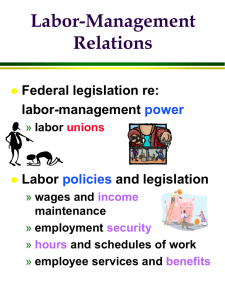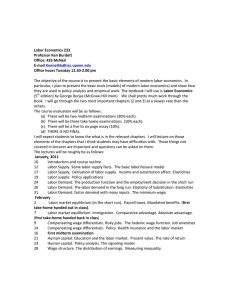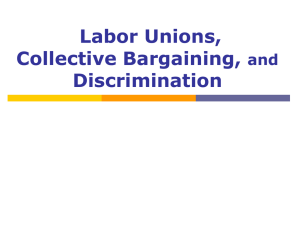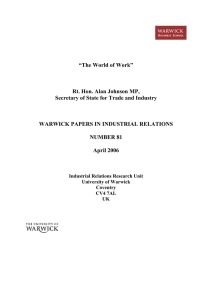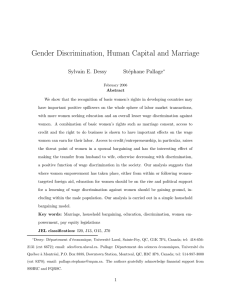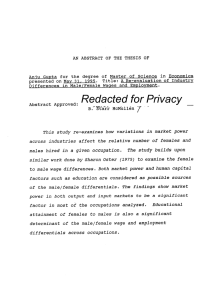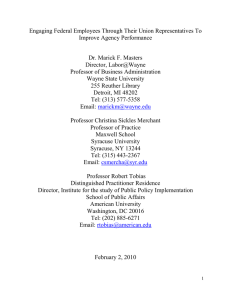Labor relations and legislation
advertisement
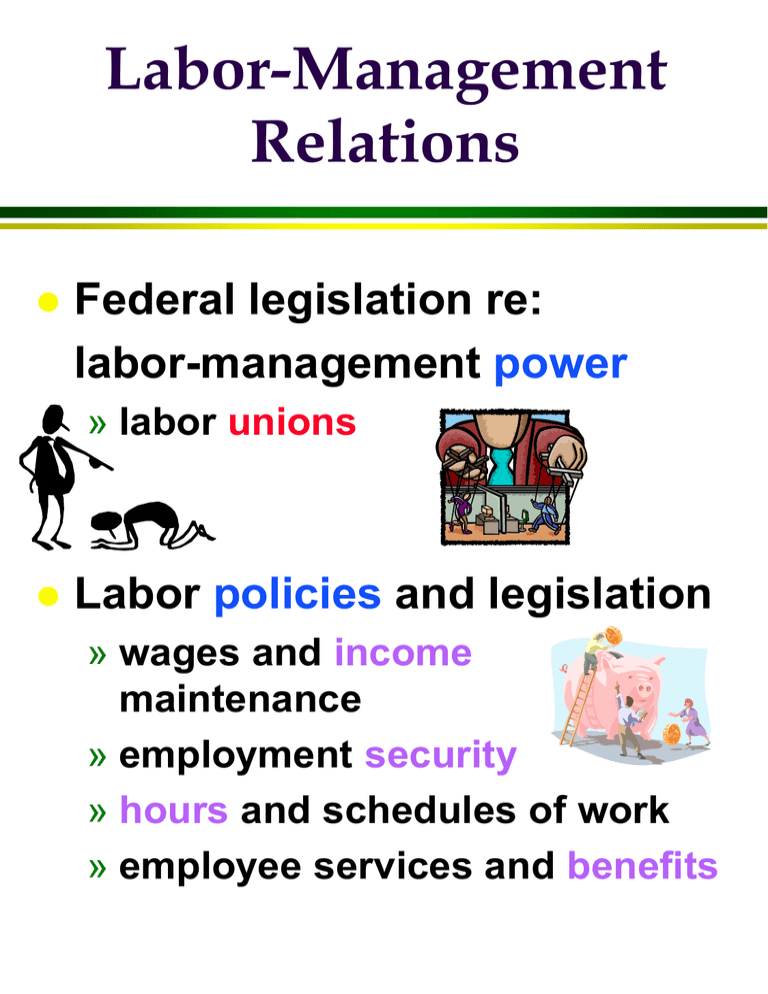
Labor-Management Relations Federal legislation re: labor-management power » labor unions Labor policies and legislation » wages and income maintenance » employment security » hours and schedules of work » employee services and benefits Federal Legislation Norris-LaGuardia Act (1932) » restricted ability of employers to obtain federal injunction against strike activities by union Wagner Act (1935) [National Labor Relations Act] » right to join union without interference or discrimination » allowance made for collective bargaining » established NLRB » established procedures to follow in unfair labor practices cases Federal Legislation Taft-Hartley Act (1947) » prevented unions from coercing employees to form » outlawed union shop (employee must join union) » outlawed closed shop (employer can hire only union members) » required participation in collective bargaining Federal Legislation Landrum-Griffin Act (1959) [Labor-Management Reporting and Disclosure Act] » established bill of rights for union worker » required financial disclosure by union » set procedures to elect union officials » provided civil and criminal procedures to prosecute union financial abuses Is unionization + or - ? Wage and Income Maintenance Fairness vs. _______ Unions have established wage scales and merit pay policies Fair Labor Standards Act (1938) » purpose = » established _____________ Wages and Income Maintenance Social Security Act (1935) » __________________ » purpose = » criteria – not a new employee – be able and willing to work – be out of a job through no fault of their own » regulations vary by state Wages and Income Maintenance Equal Pay Act (1963) » equal ____ for equal _____ (no discrimination on basis of _____) Employment Security/ Equal Employment Opportunity (EEO) Civil Rights Act (1964) » no discrimination on basis of _________________ » Title VII: includes action by employers, employment agencies, labor unions Title VII extension (1974) » no discrimination on basis of ________________ Employment Security Age Discrimination in Employment Act (1967) » protects _____________ Pregnancy Discrimination Act (1978) » no discrimination on basis of pregnancy, childbirth, related medical conditions Employment Security Civil Rights Act of 1991 » relaxed burden of proof » allowed for damages for pain and suffering » i.e. more likely that employees will sue to uphold the law Employment Security Americans with Disabilities Act (ADA, 1990) » no discrimination on basis of disability IF » pre-employment: cannot ask about disability, medical history, physical exam » can ask about Employment Security Immigration Reform and Control Act of 1986 » illegal to recruit or hire anyone not legally eligible for U.S. employment » I-9 form required Employment Security Other considerations: » ________________ » __________ for hiring – quota = fixed, inflexible % or # of positions to be filled – Affirmative Action vs. ___________________ Risks to security: Risks of security? Hours and Schedules of Work Fair Labor Standards Act » minimum wage » __________ work week or equivalent » controls employment of _______ Union contracts » negotiate State laws vary Employee Services and Benefits Health and safety » Occupational Safety and Health Act (OSHA, 1970) » Family and Medical Leave Act (1993) – allows for unpaid leave for adoption, care for ill family members Health insurance » Flexible Benefit plans Accident insurance Employee Services and Benefits Economic » Social Security Act » pension, retirement » profit-sharing » vacations, holidays, sick leave Convenience and comfort
